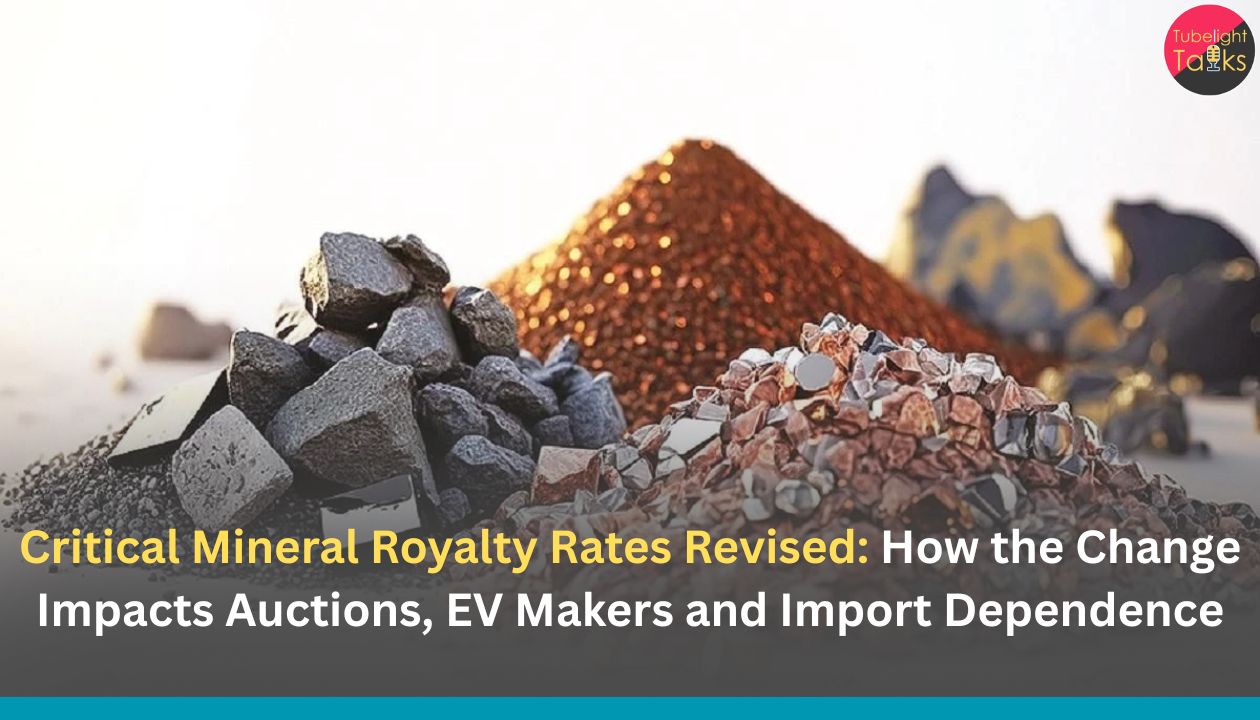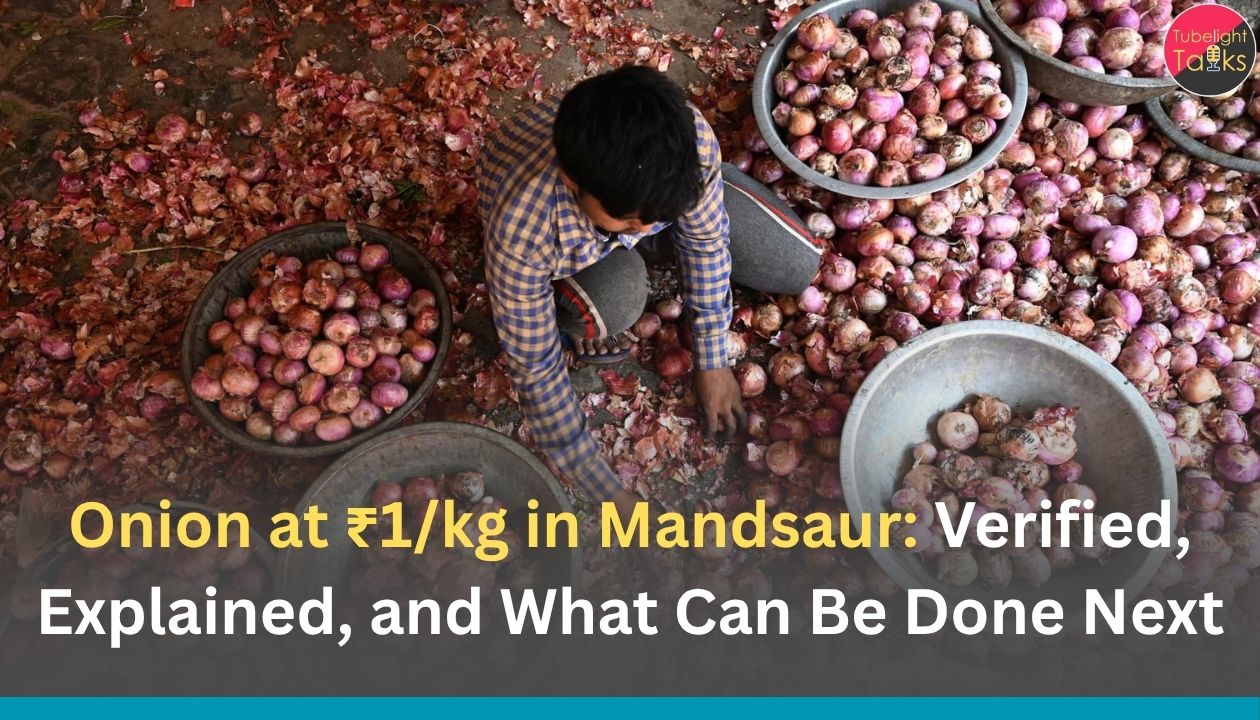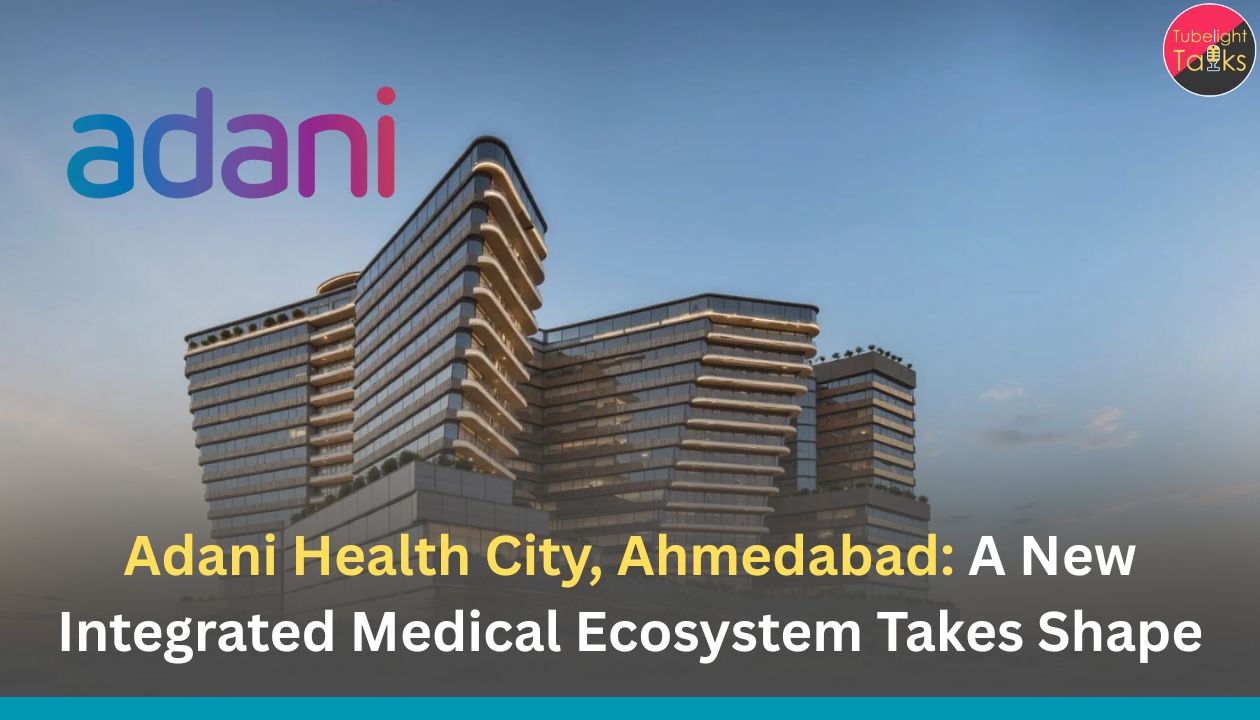Critical Mineral Royalty Rates Revised: In a push to accelerate India’s critical minerals strategy, the Union Cabinet has rationalised royalty rates for graphite, caesium, rubidium and zirconium, aligning them to Average Sale Price (ASP) so bidders can price risk more transparently and states can move ahead with auctions. The official release spells out mineral-wise rates and explains how the shift will unlock blocks, attract investment and reduce import dependence—especially for EV battery anodes (graphite) and nuclear/advanced materials (zirconium).
Below, we summarise the exact rates, implications across sectors, the auction pipeline, and what industry should do next.
The Official Word—And the Exact Royalty Rates
The Cabinet decision specifies/revises the royalty rates as follows (charged on the ASP of the contained metal/mineral unless noted):
- Caesium: 2% of ASP of caesium metal contained in ore produced.
- Rubidium: 2% of ASP of rubidium metal contained in ore produced.
- Zirconium: 1% of ASP of zirconium metal contained in ore produced.
- Graphite: 2% of ASP (ad valorem) for grades with ≥80% fixed carbon; 4% of ASP (ad valorem) for <80% fixed carbon.
The note adds that moving graphite from a per-tonne levy to ad valorem better reflects price differences across grades and global cycles.
The ministerial posts (X)
For quick context, see the official posts that amplified the decision: PIB India and Union Minister J.P. Nadda highlighted the Cabinet approval and the four minerals covered—graphite, caesium, rubidium, zirconium. Links for reference:
and
Why This Matters: Auctions, Bids and Bankability
For auction design: Royalty is a core input to bidders’ financial models; ambiguous or non-market-linked rates deter participation. The ASP-linked framework and explicit grade splits for graphite reduce uncertainty and should improve bid quality in upcoming auctions, including the sixth tranche (NIT issued Sept 16, 2025) that lists graphite, rubidium, caesium and zirconium blocks.
For states: Clear royalty norms help state governments bring blocks to market faster and improve reserve pricing logic, supporting a predictable pipeline that attracts serious explorers and OEM-linked offtakers. The PIB note explicitly says the change will promote auction of mineral blocks containing these metals and associated critical minerals (e.g., lithium, tungsten, REEs, niobium) where co-occurrence is common in certain geological settings.
For lenders/investors: ASP-linked royalty aligns state take with commodity prices, improving project bankability. It also reduces the mismatch between low-grade vs high-grade graphite pricing, a frequent problem under per-tonne levies.
Sector Impacts You’ll Notice First
EVs & Battery Materials (Graphite)
Graphite—the dominant anode material in Li-ion batteries—is a chokepoint for gigafactory supply chains worldwide. The PIB note underlines that India imports ~60% of its graphite requirement even as 9 graphite mines are operating, 27 blocks already auctioned, 20 handed over by GSI/MECL for auction, and ~26 under exploration. By setting ad valorem, grade-wise rates (2% or 4% of ASP), India makes domestic projects more investable, a prerequisite for anode capacity and natural flake upgrading at home.
Internationally, supply risk has been amplified by export permit requirements on several graphite forms from China (effective Dec 2023), a country that refines >90% of battery-grade graphite. Rational, predictable royalties buttress India’s import-risk mitigation while it scales processing.
Nuclear/Advanced Materials (Zirconium)
Zirconium is prized for corrosion resistance and the low neutron-absorption properties of its alloys, essential in nuclear fuel cladding and other high-temperature, high-corrosion applications. A 1% ASP royalty can encourage domestic projects and mid-stream investments, complementing energy-security goals.
Precision Timekeeping, Optics & Specialty Glass (Caesium, Rubidium)
Caesium underpins atomic clocks and precision instruments; rubidium features in specialty glasses, telecoms and night-vision components. With 2% ASP for both, India signals room for exploration plays and downstream glass/optics value chains—use-cases explicitly noted in the PIB explainer.
What Changes for Graphite—And Why Grade Matters
Under the old regime, graphite carried a ₹/tonne royalty that did not track global prices or grade variability well. The new ad valorem structure recognizes that fixed-carbon % drives recoveries and product pricing, so:
- ≥80% fixed carbon → 2% ASP, helping higher-grade deposits remain competitive;
- <80% fixed carbon → 4% ASP, which still scales with market prices and discourages over-declaration of grade.
Result: more accurate state revenues and fewer distortions in mine planning and beneficiation decisions.
Auctions and the Near-Term Pipeline
The Centre has already issued the Sixth Tranche NIT (Sept 16, 2025) for critical mineral blocks, including 5 graphite, 2 rubidium, 1 caesium and 1 zirconium. With royalties clarified, bidders can rationally price exploration CAPEX, beneficiation, ASP assumptions and offtake structures—critical for bankable bids. Expect state notifications to line up as pre-bid consultations conclude.
India’s Critical-Minerals Play: How Royalty Fits In
India added a list of 24 critical & strategic minerals to the MMDR Act, with graphite and zirconium on the list. Rational royalty is one leg of a multi-pillar approach that also includes faster auctions, geoscience data from GSI/MECL, and demand-side pull from EVs, renewables, electronics and nuclear. The PIB note explicitly situates the decision in the energy transition context and flags employment generation from domestic production.
Globally, supply-chain concentration particularly for graphite has triggered export controls and licensing regimes in major producer countries, sharpening the case for domestic capacity. India’s move syncs with that reality by improving the risk-return equation for explorers and midstream investors.
Values & Public Interest: Stewardship in Resource Policy
Beyond numbers, resource governance hinges on truthfulness, restraint and service to the common good virtues stressed in discourses by Sant Rampal Ji Maharaj. It emphasise living truthfully, avoiding harm and acting with duty towards others. In mining policy, that translates into transparent auctions, fair compensation, environmental safeguards, and long-term community benefit.
So the wealth beneath our feet becomes shared prosperity, not short-term gain. Readers who wish to reflect on this values lens can explore his official resources and talks.
Read Also: India’s Rare Earth Potential Is Massive, But Processing Is the Missing Link: WEC Chairman
FAQs: Cabinet Clears Critical Mineral Royalty Rates Revised
1) What exactly did the Cabinet approve?
New royalty rates for graphite, caesium, rubidium, zirconium, largely ASP-linked (graphite grade-wise): Caesium 2%, Rubidium 2%, Zirconium 1%, Graphite 2% (≥80% FC) / 4% (<80% FC) to facilitate auctions and domestic production.
2) Why link royalty to ASP?
ASP (Average Sale Price) indexing ties state revenue to market prices, improves bid modelling, and reduces distortions from flat per-tonne levies especially important for grade-sensitive graphite.
3) How does this help EVs and clean energy?
More investable graphite projects support battery-anode supply; zirconium supports nuclear components. Domestic production cuts import risk and strengthens green-tech value chains.
4) What’s next for auctions?
The Centre issued NIT (Sept 16, 2025) for the Sixth Tranche with multiple blocks for these minerals. With royalties clarified, states can proceed and bidders can firm up offers.
5) Are there broader supply-chain risks we should know about?
Yes. Global graphite flows are concentrated; China requires export permits for several graphite products—one reason India is accelerating domestic capacity.










